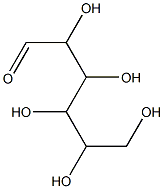CM-Cellulose , CM-52 , 9000-11-7
Synonym(s):
Carboxymethyl cellulose;CM-Cellulose
CAS NO.:9000-11-7
Empirical Formula: C6H12O6
Molecular Weight: 180.156
MDL number: MFCD00149018
EINECS: 618-326-2
| Pack Size | Price | Stock | Quantity |
| 25g | RMB150.40 | In Stock |
|
| 100g | RMB488.80 | In Stock |
|
| 500g | RMB1584.00 | In Stock |
|
| others | Enquire |
PRODUCT Properties
| Density | 1.050 g/cm3(Temp: 15-18 °C) |
| FEMA | 2239 | CARBOXYMETHYLCELLULOSE |
| storage temp. | 2-8°C |
| solubility | Practically insoluble in anhydrous ethanol. It swells with water to form a suspension and becomes viscid in 1 M sodium hydroxide. |
| form | preswollen, microgranular |
| color | White to off-white |
| Odor | odorless |
| Stability: | Stable. Combustible. Incompatible with strong oxidizing agents. |
| InChI | InChI=1S/C6H12O6/c7-1-3(9)5(11)6(12)4(10)2-8/h1,3-6,8-12H,2H2 |
| InChIKey | GZCGUPFRVQAUEE-UHFFFAOYSA-N |
| SMILES | C(=O)C(O)C(O)C(O)C(O)CO |
| LogP | -3.17 |
| CAS DataBase Reference | 9000-11-7(CAS DataBase Reference) |
| EPA Substance Registry System | Cellulose, carboxymethyl ether (9000-11-7) |
Description and Uses
Carboxymethylcellulose(CMC) is a gum that is water-soluble cellulose ether manufactured by reacting sodium monochloroacetate with alkali cellulose to form sodium . It dissolves in hot or cold water and is fairly stable over a pH range of 5.0–10.0, but acidification below pH 5.0 will reduce the viscosity and stability except in a special acid-stable type of CMC. A variety of types are available which differ in viscosity and degree of substitution (the number of sodium groups per unit). It functions as a thickener, stabilizer, binder, film former, and suspending agent. It is used in a variety of foods to include dressings, ice cream, baked goods, puddings, and sauces. The usage range is from 0.05 to 0.5%. Also termed cellulose gum.
Safety
| WGK Germany | 1 |
| RTECS | FJ5700000 |
| HS Code | 3912310000 |
| Toxicity | LD50 unreported in mammal (species unspecified): 13340mg/kg |


